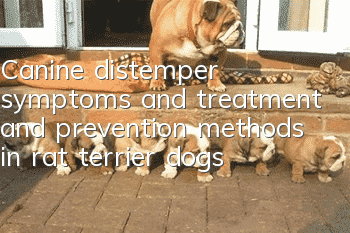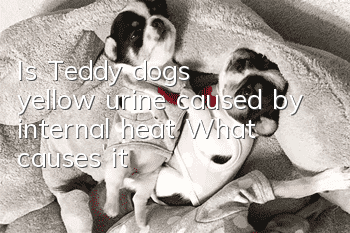Canine distemper symptoms and treatment and prevention methods in rat terrier dogs

Symptoms of canine distemper in rat terrier dogs:
1. If a rat terrier dog gets canine distemper, the early symptoms are mainly cold symptoms and enteritis symptoms. . At this time, the dog will sneeze, have a runny nose, cough, have a fever (the body temperature can reach above 40°C, and will quickly drop to normal temperature after 2 days), eat less, and have mild diarrhea.
2. Canine distemper in rat terriers begins to turn into the middle stage in 7 to 14 days. At this time, the body temperature rises for the second time, generally above 40°C. At this time, any antipyretic drugs will have no effect. It is not obvious and lasts for 7 to 12 days, accompanied by loss of appetite, runny nose, dry cough, rapid breathing, red, swollen, moist or eroded eyelids.
3. In the late stage of canine distemper in rat terrier dogs, the body temperature returns to normal (perhaps accompanied by a slight fever, about 38.5~39.5℃), and the dog will cough and have purulent nasal discharge. , eyelid erosion, preferring to lie down and move around, eating less, picky eaters or hunger strikes, diarrhea, and symptoms such as thickened toe pads, skin papules (in some cases, rice-sized red papules appear on the skin of the lower abdomen and medial thigh) and neurological symptoms.
Treatment methods for rat terrier canine distemper:
1. Go to the hospital in time, the sooner the better.
2. Canine distemper must be eaten. If the dog is weak and sick, you can use goat milk to soak the dog food until it is soft to promote digestion. It must be noted that not eating is the biggest taboo for canine distemper. Almost half of the treatment lies in eating.
3. It is best to take monoclonal antibodies, but after taking monoclonal antibodies, the antibodies from the previous vaccines are useless, and you need to be injected again after recovery.
Methods to prevent canine distemper in rat terrier dogs:
1. The best way is to regularly immunize and vaccinate against canine distemper.
2. Avoid going to places where dogs are densely populated to avoid an outbreak of canine disease and infection.
3. The home must be disinfected regularly. It is best for the owner to disinfect the dog in time when returning home from outside. If other dogs at home are sick, they must be isolated and disinfected immediately.
- What's the matter with dogs eating grass?
- How about super believable? Is deworming effective for dogs?
- How to train a Greyhound to stare at a light? Tips for training a Greyhound to stare at a light!
- What should you pay attention to when vaccinating your dog? Precautions for dog vaccination!
- What should I do if my Greenland dog vomits after eating too much?
- Come and see how many of these pet-raising misunderstandings you have fallen into?
- How to cool down your dog in summer, teach you how to make your own dog ice cream!
- Can dogs drink Huoxiang Zhengqi water if they have heat stroke?
- What are the solutions to dogs’ bad mouth?
- How many days does it take for a newborn puppy to walk?



